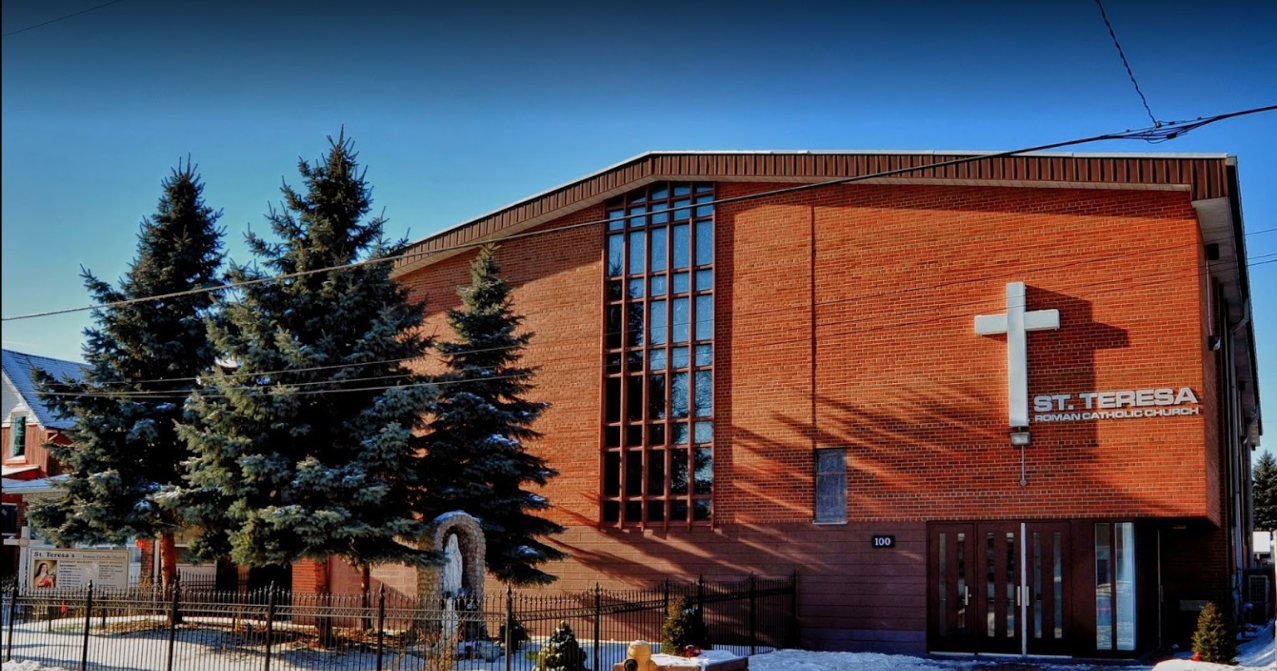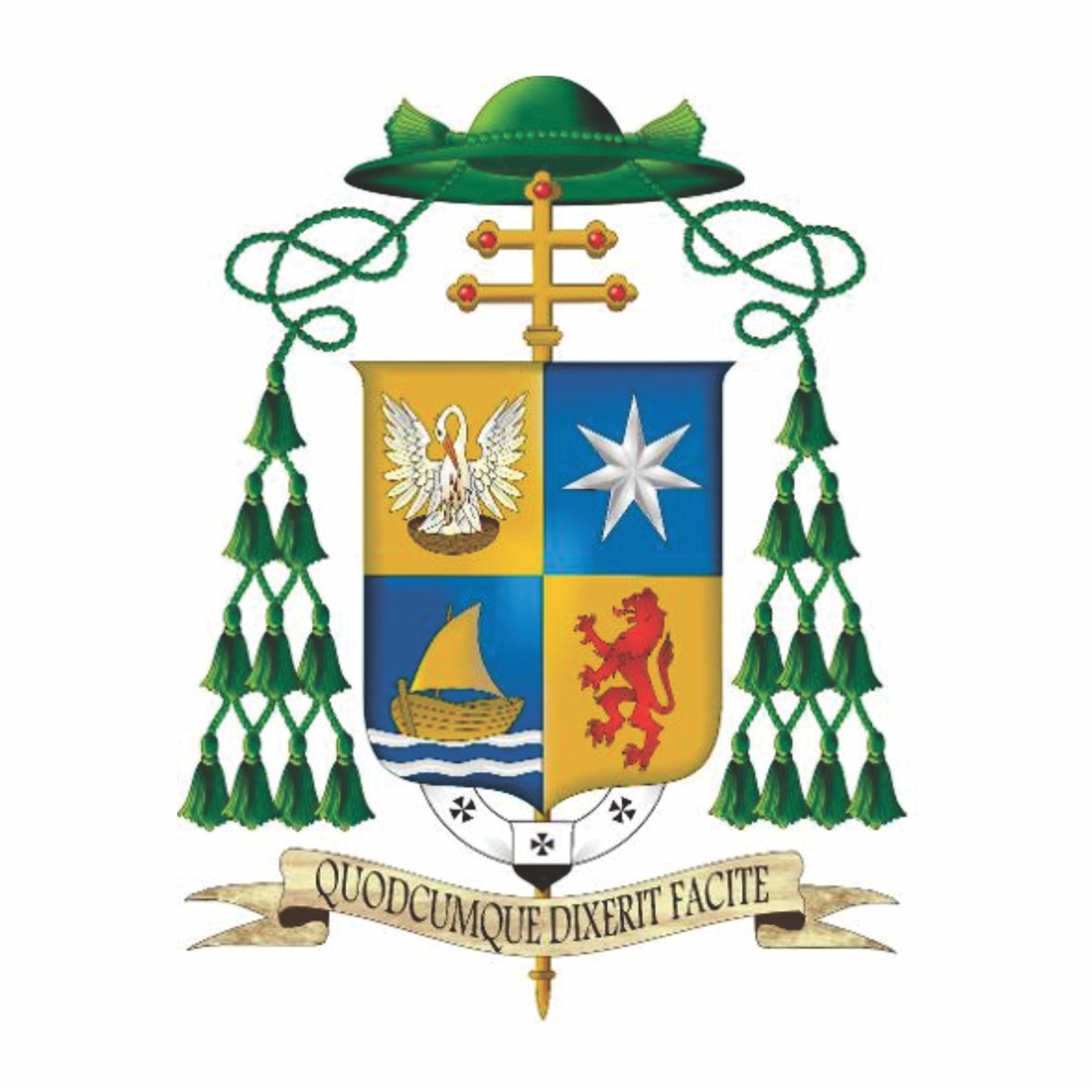
Message of Archbishop Leo on Devotion to the Most Sacred Heart of Jesus

Message of His Grace Most Reverend Francis Leo
Metropolitan Archbishop of Toronto
on Devotion to the Most Sacred Heart of Jesus – June 2024
Dear Brothers and Sisters,
May Jesus and Mary be in your souls.
Our life in Christ, as believers & disciples, witnesses & missionaries, takes on a particular dimension during the course of the month of June as, in Catholic devotional life, we honour in a very special way the Most Sacred Heart of Jesus. I invite all the faithful of the Archdiocese of Toronto to join together in celebrating Our Lord with this venerable devotion throughout the entire month and especially on June 7th this year, the liturgical celebration of the Solemnity. At home and in parishes, schools and different communities – let us draw closer to Christ and adore Him with deep faith and devotion.
The history of devotion to the Sacred Heart is long and varied, some dating it back to the Middle Ages where it began as a private devotion, while others point to the Patristic age. In addition, down through the centuries, a number of saints and mystics have contributed to the understanding and promotion of this devotion, like St. John Eudes, and some even received apparitions, like St. Margaret Mary Alacoque.[1] Closer to our era, Pope Pius XII issued an encyclical called Haurietis aquas (You will draw waters) in 1956 to commemorate the 100th anniversary of the establishment of the liturgical feast by Pope Pius IX.
As the Directory on Popular Piety and the Liturgy states:
“Of all devotions, devotion to the Sacred Heart was, and remains, one of the most widespread and popular in the Church. Understood in the light of the Scriptures, the term "Sacred Heart of Jesus" denotes the entire mystery of Christ, the totality of his being, and his person considered in its most intimate essential: Son of God, uncreated wisdom; infinite charity, principle of the salvation and sanctification of mankind. The "Sacred Heart" is Christ, the Word Incarnate, Saviour, intrinsically containing, in the Spirit, an infinite divine-human love for the Father and for his brothers.”[2]
Taking a close look at Sacred Scripture to nourish our faith in Christ under this sublime title and devotion, two particular verses come to mind:
First, “Take my yoke upon you, and learn from me; for I am gentle and humble in heart, and you will find rest for your souls” – Matthew 11:29. Jesus defines himself as gentle/meek and humble in heart. Gentle (or meek) points to Jesus' attitude towards others; it is the horizontal dimension whereby he interacts with persons with a courageous but non-violent approach, a truly merciful demeanour, always ready to forgive, but also demanding and challenging - as true, authentic love is. Humble indicates the vertical plane, the obedient and docile attitude vis-à-vis the Father's will; an interior, free, generous and authentic quality of the heart which is lifegiving and which brings about peace. This month, we would do well to consider how exactly are we living out these two prime virtues of Jesus’ heart and how do we let ourselves be challenged by His love by growing in these same virtues.[3] Am I a truly meek and humble individual? Are my relationships based on the gentle love of Christ? Is my ministry humble and therefore audacious, lifegiving and open to the work of transformative grace?
Second, “Blessed are the pure in heart, for they will see God” – Matthew 5:8. This beatitude is from Christ’s Sermon on the Mount and intimates the heart as a symbol of spiritual and moral interiority; it designates the profound and personal dimension of our faith relationship with God and with others as opposed to mere superficiality and exteriority. The pure of heart are those who know how to accept the teachings of Christ, the very Person of Christ, which requires full adherence to the Gospel. The vision of God promised to the pure of heart includes the ultimate salvation in Heaven where they will see God "face to face" (1Cor 13:12). In a similar vein, Pope Benedict XVI reminds us that “in biblical language, ‘heart’ indicates the centre of the person where sentiments and intentions dwell … in the Heart of the Redeemer we adore God's love for humanity, His will for universal salvation, His infinite mercy."[4] As we journey through this month, perhaps it would benefit us to take a look at our heart and see how pure it really is. Does my heart yearn for the living God? How precious is it for me to do His will over and beyond all others? Am I attached in unhealthy and slavish ways to my own idols, ideas and ways of doing that are not of God? Is purity of mind, heart and body what I strive for daily? Lest we forget, it is only in possessing this spiritual quality that we will be able to generate reality that includes healthy change (conversion of lifestyle) and which in turn will impact our world with real and lasting effect (Kingdom building).
Finally, what of the many broken hearts we experience daily, at times even our own? Psalm 34:18 teaches that: "The Lord is close to the broken hearted and saves those who are crushed in spirit”. Our human condition is such that, from time to time, we feel as if our heart has been broken to pieces, exhausted and helpless. Sometimes it is due to our own personal sin or failure; other times it might be a sense of betrayal from another, the loss of someone special, the end of a relationship, the injustices we witness, and so many other reasons. Going out of ourselves and mending someone else’s broken heart is an age-old spiritual remedy for restoration of own wounded heart, as well as helping to heal the world as we know it. To live in this world as a follower of the Crucified Lord Jesus means to enter willingly and generously into the misery, pain and brokenness of the other, lovingly trying to bring the healing of our presence and compassion. The Lord works his marvels in us, to heal us, as we get busy healing others. It is the work of healing grace (gratia sanans). Speaking of the Lord working in and through us, Pope Francis said that He “does not indulge our desire to immediately and repeatedly change the world and other people. Instead, he intends primarily to heal the heart, my heart, your heart, and the heart of each person; God changes the world by transforming our hearts, and this he cannot do without us. The Lord wants us to open the door of our hearts, in order to enter into our lives. And this act of opening to him, this trust in him is precisely “the victory that overcomes the world, our faith” (1 Jn 5:4). For when God finds an open and trusting heart, then he can work wonders there.”[5]
The divine dynamic of love calls forth from us a response of love and adoration for a God who has loved us first. When we really contemplate the love of God for us, how can we not respond? How can we not return God’s love for us with acts of devotion and charity? Pope Leo XIII consecrated the world to the Sacred Heart of Jesus in 1899 explaining that to “consecrate ourselves to His most Sacred Heart [is] an act which is nothing else than an offering and a binding of oneself to Jesus Christ.”[6] Binding ourselves to the heart of Jesus invites us to consider his love for Our Heavenly Father and for the world and act in and through his love (cf. Jn. 15:5). Jesus’ love for the Father and for us is evident throughout the Gospels, but it was on the Cross, on Good Friday, that the selfless and gifted love of Jesus shone brightest: when his Heart was pierced with a lance.
In conclusion, dear Faithful of the archdiocesan family, in this month of June, let us be reminded that the Most Sacred Heart of Jesus represents our public witness of love, care, acceptance and redemption; it is the only symbol we need in reaching out and assisting our contemporaries – men, women and children – in better understanding and deeply experiencing the life-giving power of Christ’s personal love for them. I wholeheartedly appeal to you all, Catholics throughout our blessed archdiocese: let us prefer Christ to politicization, devotion to guile, grace to odium, truth to ideology. May we endeavour to sincerely reflect the love of Christ in all that we do and with all those whom we encounter.
Blessed be His most Sacred Heart!
Sincerely Yours in Jesus with Mary,
Most Rev. Francis Leo
Metropolitan Archbishop of Toronto
[1] “The beginnings of this devotion can be traced back to the Fathers of the Church including St. Ambrose, St. Jerome, St. Augustine, St. Irenaeus, St. Hippolytus of Rome and St. Justin Martyr. In the 11th century, this devotion was renewed in the writings of Benedictine and Cistercian monasteries. One famous example is the 12th century “O Sacred Head Surrounded” prayer composed by St. Bernard of Clairvaux.
From the end of the 13th to 16th Centuries, the devotion continued to spread, but it mostly remained a private devotion. The first liturgical feast of the Sacred Heart was celebrated in France in 1670 by St. John Eudes who had sought approval from the local Bishop. However, modern-day popularization of this devotion is linked to St. Margaret Mary Alacoque, a French nun who learned of the devotion from a series of apparitions of Jesus to her between 1673 and 1675.” Vatican News, 2020.
[2] Congregation for Divine Worship and the Discipline of the Sacraments, Directory on Popular Piety and the Liturgy Principles and Guidelines, December 2001, 166.
[3] Catechism of the Catholic Church, 1803: “A virtue is an habitual and firm disposition to do the good. It allows the person not only to perform good acts, but to give the best of himself. The virtuous person tends toward the good with all his sensory and spiritual powers; he pursues the good and chooses it in concrete actions.”
[4]Pope Benedict XVI, Angelus Address, 5 June 2005.
[5] Pope Francis, Homily, Apostolic Journey to Georgia and Azerbaijan, Baku, 2 October 2016.
